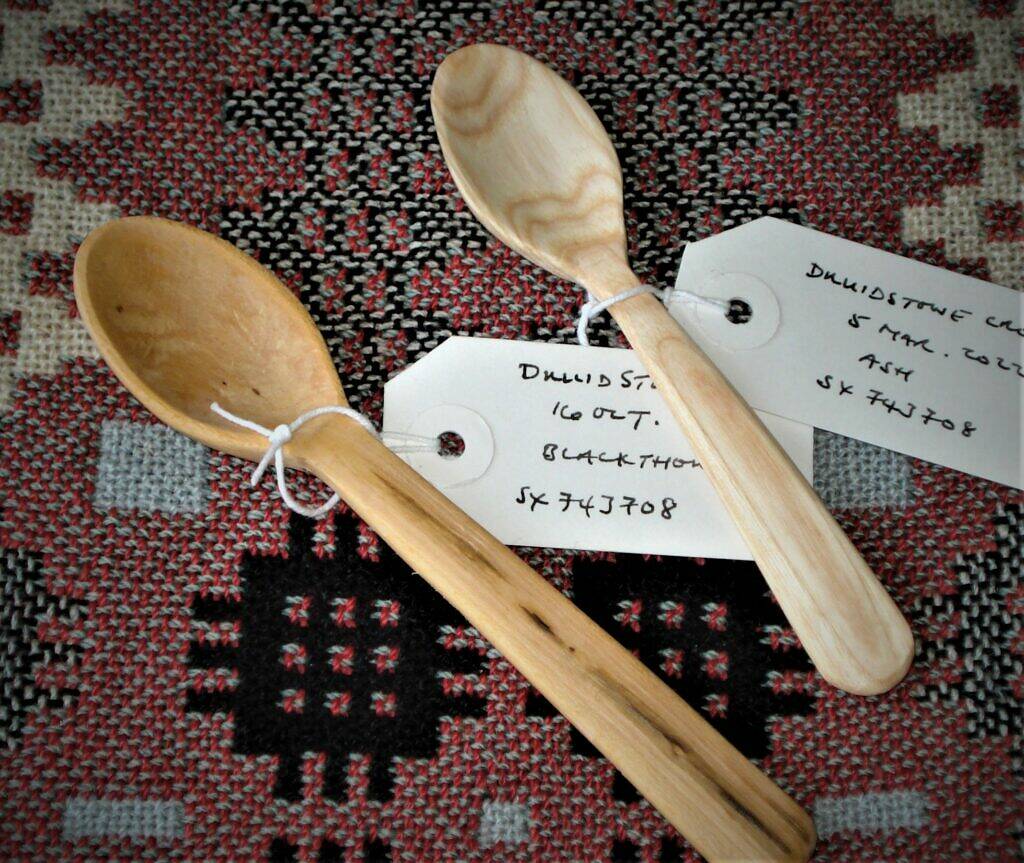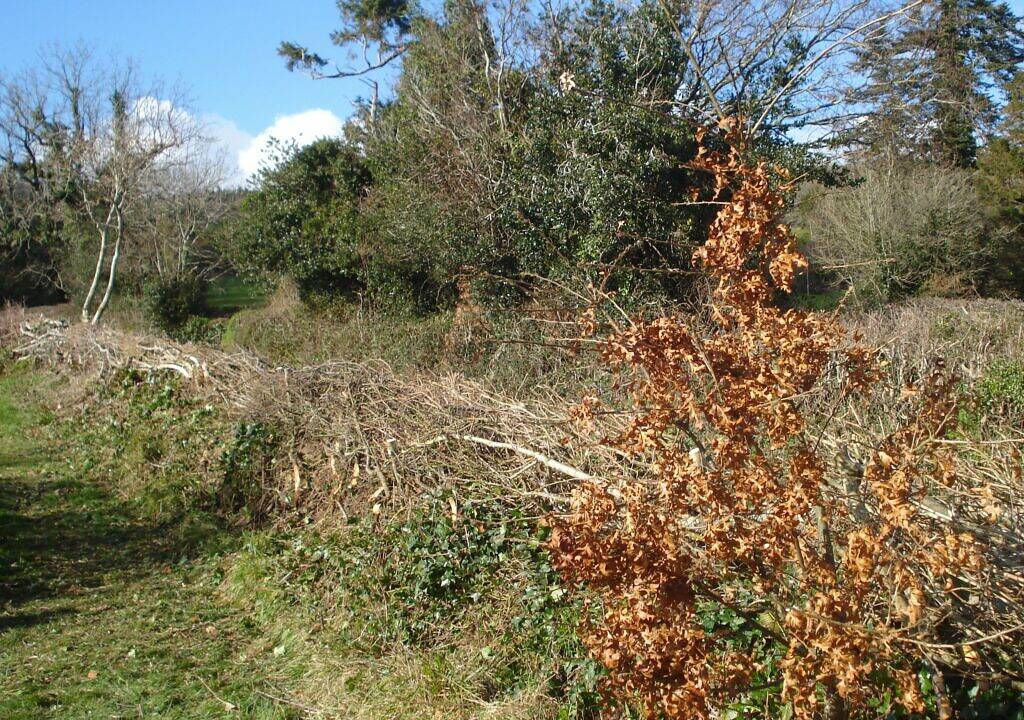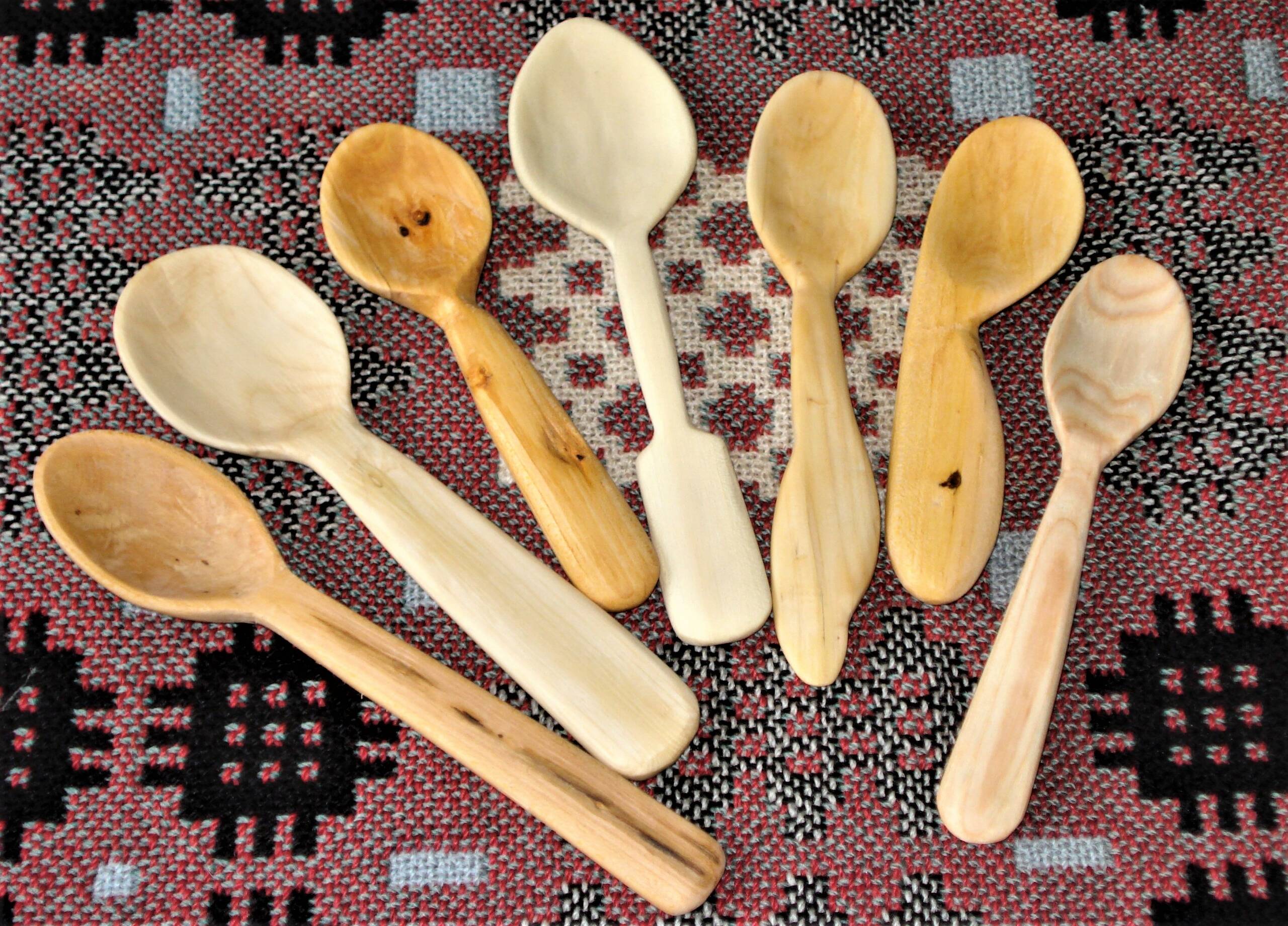16 October 2021: Blackthorn
To begin I took home some blackthorn, cut out of a gorgeously dense Devon-style hedge beside a deeply-sunken lane on the edge of Dartmoor. Blackthorn is one of the many magical trees in British folklore, a gateway into an enchanted world. I split the recovered branch wood, sawed it to length, removed the bark and the waste wood with a hand axe, and began to carve. The wood was wonderful to work, easy to cut and easy on the eye, the chiaroscuro-like grain seemingly magicked into being by the knife; the project, to carve a spoon from each hedge laid during the winter had got off to a good start. There is a folk tale of a farmer who dared cut down a blackthorn tree and whose house was burned to the ground by fairies, whose home it had been. I hope the fairies did not mind me taking a few spoon-sized pieces of wood, and I hope they liked the finished spoon. Marks: 8 out of 10.
30 October 2021: Hazel
According to Ray Tabor in his Encyclopedia of Green Woodworking field maple, sycamore, birch, cherry, yew and spindle are all excellent for spoon carving. He does not mention hazel and I think I learned why. The wood carved easily enough but small chunks were in the habit of crumbling from the edge of the bowl as I manipulated the hook-knife, making the bowl itself less and less bowl-like. I got a spoon, of a kind, on my third attempt. The hedge it had come from was a hardscrabble affair at the entrance to a municipal park, its car park busy all day as dog walkers, allotment gardeners and Saturday-afternoon footballers came and went. We had keyhole-like views of the southern fringe of Dartmoor beyond electricity pylons, and the constant hum of traffic on the A-38 as wild track. This was the opening weekend of the COP26 conference, in Glasgow, and I wondered if these hedges and these spoons mattered? Marks: ungraded.
11 December 2021: Blackthorn
This hedge, oddly, seemed to have only two tree species, hazel down one side and blackthorn down the other. As I had promised myself not to try hazel a second time it was blackthorn once again, and the fairies seemed to extract their tincture of revenge. The wood I took home had an unseen fault in it, which caused my first spoon to split lengthways when the carving was about three-quarters done. The same crack appeared on my second attempt, which I rectified (purists will be aghast by the rest of the sentence) by forcing wood glue into the developing split. The finished spoon was chunky but not unattractive, and quickly turned a rich, ochre-like colour just as my earlier blackthorn spoon had done. I would add blackthorn to Tabor’s list, whatever the fairies may think. Marks: 5 out of 10 (the judges may have failed to notice the glue).
15 January 2022: Sycamore
Poor, unloved sycamore. Was it introduced by the Romans? Or by the Elizabethans? No matter, it has been here long enough to be part of the landscape, even if it is not always the best of neighbours. Welsh Love Spoons were commonly carved from sycamore, as were butter prints in all parts of Britain, each dairy farm would once have had its own distinctive design; it used to be the go-to material for things like rolling pins and chopping boards. The wood cut easily, clean and milk-white as the spoon emerged from beneath the knife, in the warmth of my wintertime kitchen. You can allow your mind to wander a little as you carve, to other winters and other kitchens, when somebody, somewhere, would have sat down to fashion the implements of day-to-day life from wood harvested from hedges, just like the one we had laid a few days before. Jim Jones, an English hedgelayer, now working as an academic in Canada, captures the thought rather nicely: “Hedgelaying and spoon carving aren’t going to change the world, but the connection to place, purpose, and people may offer a pathway to transform our expectations of what it means to live a good life.” Marks: 5 out of 10 (for effort).
29 January & 12 February 2022: Blackthorn
Back to blackthorn. This hedge, a long one, running along the edge of a country cricket ground, was full of the inevitable hazel – and the inevitable cricket balls, lots of them – together with elm, holly, elder, ash and oak, which I dismissed as unsuitable; I had allowed myself to become blinkered by Tabor’s inventory of excellent woods, too ready to disregard anything not on his list. So I took home some pieces of blackthorn, which had by now become my trusty stand-by, the risk of angering the ravening fairies not withstanding. Willow and poplar, incidentally, tend to be too soft for carving, other species, such as ash, hornbeam, hawthorn and sweet chestnut too hard. I made two spoons, one from each visit, small mementoes of a place where we had worked two long, strenuous days. William Morris argued that we become disconnected from life without dignified, human occupation, which took my thoughts back to Jones’ quotation: it was becoming easier to see how these spoons, regardless of their quality, could begin to transform expectations of thinking, of learning, of remembering, of doing, in a way something purchased from a pound shop never could. Marks: 6½ out of 10 (for each).
5 March 2022: Ash
Once again there was not too much to be had that was the right shape and size for a spoon, but this time I eschewed Tabor’s list and settled for ash. The green wood cut with an ease that belied its reputation, a dreamy grain appearing as I cut my way towards the design I had in mind. Ash is another of those mystical trees; in Scandinavian mythology it is Yggdrasil, or world tree, its trunk reaching to the heavens, it branches to all the countries of the Earth, and its roots to the underworld. Perhaps my little hand-carved spoon carries inside it the tiniest bit of that tree, and in its simplicity and beauty, in the labour its making demanded, whispers the smallest of secrets, one that may help point us towards the better, fairer, low-carbon world we so urgently need to create? A bit of sanding, a bit of walnut oil, a final polish, and my spoon was finished. My project was finished too, bookended by my two favourite spoons, which, funnily enough, came from different sections of the same gorgeously dense Dartmoor hedge. Marks: 8 out of 10.


